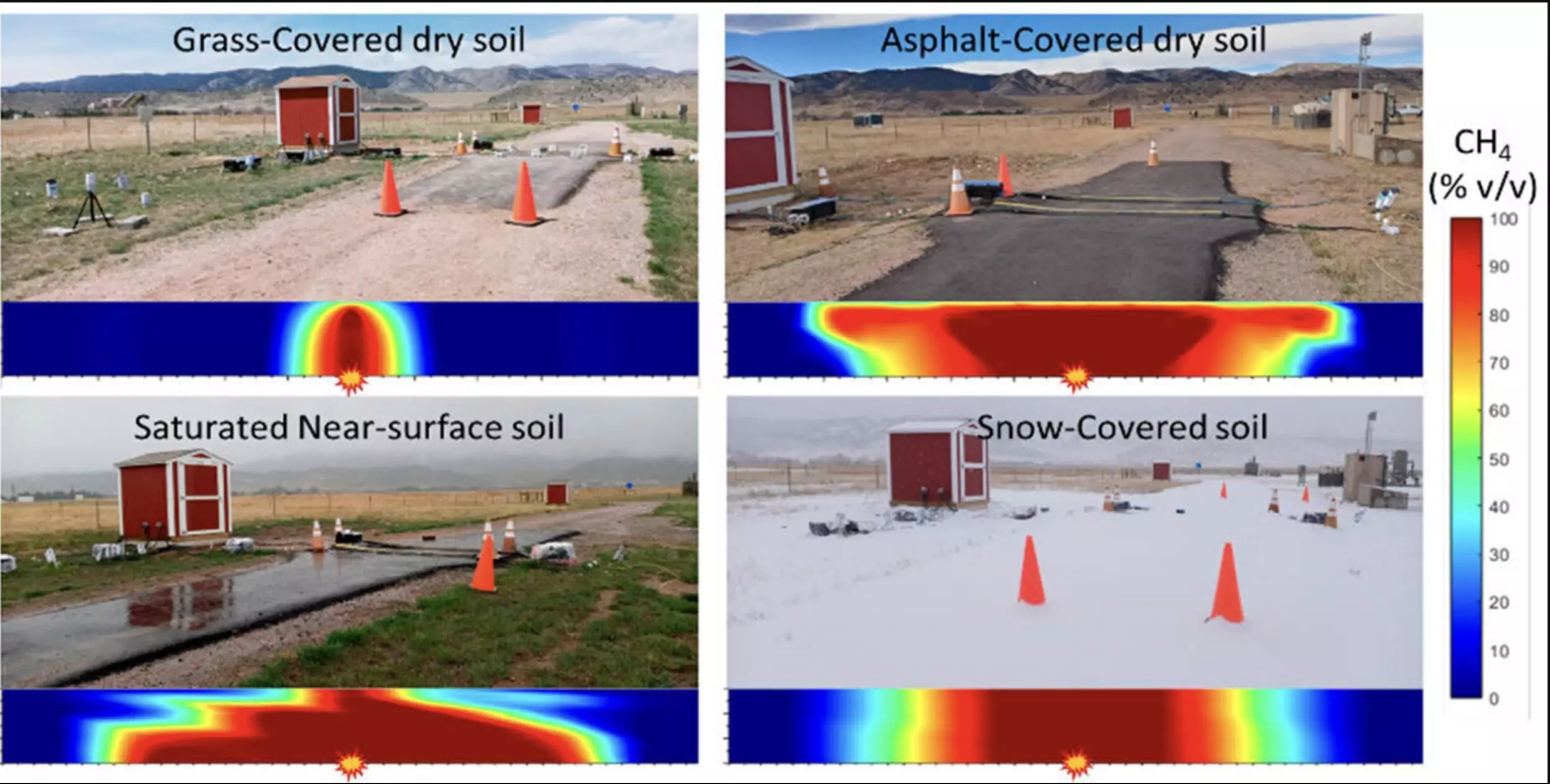The challenge of ensuring safety around natural gas pipelines has taken on new urgency in light of a groundbreaking study conducted by researchers at Southern Methodist University (SMU). This research illuminates how various surface conditions, from water-saturated soil to snow and asphalt, significantly influence the behavior of leaking natural gas. By demonstrating that gas can migrate vastly further and faster under adverse surface conditions, the study introduces critical considerations for both environmental health and public safety.
At the heart of this research is the alarming potential for undetected gas leaks to lead to dangerous situations. Traditional assumptions regarding the dispersion of natural gas leaks are being challenged, underscoring the necessity for a reevaluation of current safety protocols. As the study illustrates, factors like soil saturation and surface material are not just secondary players; they have a direct impact on the pathways and speed of gas migration.
Surface Conditions as Catalysts for Risk
Research led by Kathleen M. Smits, an influential figure in civil and environmental engineering, highlights the importance of comprehending how surface variables affect belowground gas behavior. With findings indicating that gas can travel three to four times farther and 3.5 times faster through saturated or compromised surfaces as opposed to dry soil, the necessity for more comprehensive leak assessments becomes glaringly evident.
In conducting controlled experiments mimicking real-world escape scenarios, the researchers examined multiple surface conditions—ranging from wet grass to asphalt—to quantitatively measure gas dispersal. The implications are profound: a leak that might appear localized in a dry environment can transform into a widespread hazard when surface saturation is introduced. This revelation is crucial; it provides actionable intelligence for first responders and gas companies striving to mitigate the effects of pipeline breaches.
The Hidden Hazard of Methane
One of the pressing concerns highlighted by the study is the dangerous duality of methane. Not only is it a flammable substance that poses a risk of explosion, but it is also a significant contributor to global warming. This reality calls for an immediate reassessment of leakage management strategies, focusing on both safety and environmental implications. The urgency to detect and eliminate methane leaks could potentially help reduce the greenhouse gas emissions that are fueling climate change.
This newfound knowledge allows us to prioritize resources effectively when addressing leaks. The researchers advocate for identifying and remediating leaks based on their potential environmental impact, not merely their immediate safety threats. This approach marries public safety with global environmental responsibility, making it imperative for industries to adopt more sophisticated leak detection and response strategies.
The Future of First Response
The ramifications of this research extend beyond understanding gas behavior; they directly influence how first responders and utility companies react to leaks. Established protocols may no longer suffice, given the fluid dynamics of gas migration under varying conditions. First responders need to recognize that the situation may evolve even after leaks are fixed, as methane can remain trapped and high in concentration for several days under certain surface conditions.
Through this lens, the study’s findings become a call to action. Immediate and adaptive response strategies are essential when addressing pipeline leaks, particularly in environments where surface conditions offer little indication of the danger lurking beneath. Operators must evolve; the concept of a “one-size-fits-all” approach to leak management must give way to a more nuanced understanding of how environment shapes risk.
Exploring New Terrain in Gas Leak Research
The study opens doors for further investigation into how soil types and conditions impact gas leakage across diverse environments. The research team’s focus on quantifying distances and velocities under various surface conditions lays the groundwork for future studies. It becomes crucial to adapt these findings to different geographic and environmental contexts to enhance universal pipeline safety measures.
Imagine the repercussions if similar studies are conducted in new environments. From urban infrastructures with complex surface materials to remote natural landscapes, the variability in gas migration is ripe for exploration. This rich area of research could significantly sharpen our understanding of methane behavior and its implications for safety and climate health across the globe.
By redefining how we understand the migration of natural gas and emphasizing the importance of surface conditions, we can better prepare for the unseen dangers that pipeline leaks pose. The connections established between surface structures and gas behavior could serve as a pivotal turning point in both risk management and environmental preservation efforts. The conversation surrounding pipeline safety is evolving, and so must our strategies.


Leave a Reply